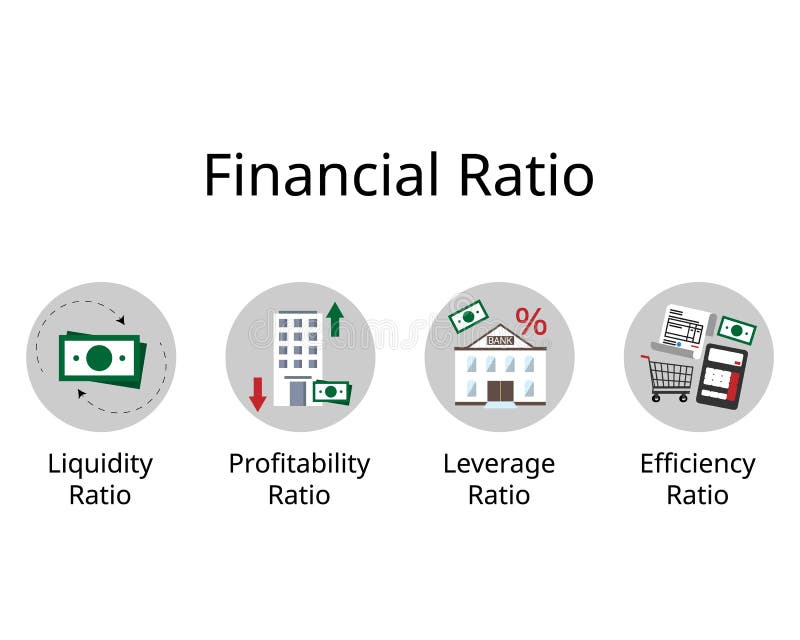Current Ratio Financial Accounting

To work with the current ratio, you need to review each of the accounts in the balance sheet and consider how the current ratio can change. To compare the current ratio of two companies, it is necessary that both of them use the same inventory valuation method. For example, comparing current ratio of two companies would be like comparing apples with oranges if one uses FIFO while other uses LIFO cost flow assumption for costing/valuing their inventories. The analyst would, therefore, not be able to compare the ratio of two companies even in the same industry. Therefore, applicable to all measures of liquidity, solvency, and default risk, further financial due diligence is necessary to understand the real financial health of our hypothetical company. Current ratios are not always a good snapshot of company liquidity because they assume that all inventory and assets can be immediately converted to cash.
- The Current Ratio provides valuable insights into a company’s liquidity.
- This is because excess cash and inventory do not generate returns like investments in new projects or debt repayments can.
- Current liabilities include accounts payable, wages, accrued expenses, accrued interest and short-term debt.
- Get instant access to video lessons taught by experienced investment bankers.
- Public companies don’t report their current ratio, though all the information needed to calculate the ratio is contained in the company’s financial statements.
- The current ratio is 2.75 which means the company’s currents assets are 2.75 times more than its current liabilities.
Q. How does the Current Ratio affect investment decisions?
This slow, manual approach could lead to outdated insights, making relying on the quick ratio for real-time financial decision-making challenging. Generally, a quick ratio above 1.0 suggests that your company can comfortably meet its immediate obligations. This ratio reflects your business’s capacity to cover expenses, pay employees, and make necessary investments without delay. Standard costing has been a foundational tool in cost accounting for decades, helping businesses set predetermined costs for products and measure variances against actual costs.
Ask Any Financial Question
In some cases, companies may attempt to improve their Current Ratio by delaying payments or accelerating the collection of accounts receivable. Analysts must be vigilant for such tactics, which can distort the true financial health of a company. QuickBooks Online allows business owners to manage the entire accounting process online, and you can manage your inventory, input your bank statement, and generate financial statements using the cloud.
Example 5: Creditworthiness

If the current ratio computation results in an amount greater than 1, it means that the company has adequate current assets to settle its current liabilities. In the above example, XYZ Company has current assets 2.32 times larger than current liabilities. In other words, for every $1 of current liability, the company has $2.32 of current assets available to pay for it. In other words, it is defined as the total current assets divided by the total current liabilities. The current ratio is a liquidity and efficiency ratio that measures a firm’s ability to pay off its short-term liabilities with its current assets.
For example, a company may have high current assets, but if they are not liquid, it may struggle to pay its short-term debts. In addition to the current ratio, it is essential to consider other financial metrics when evaluating a company’s financial health. For example, the debt-to-equity ratio can provide insight into a company’s long-term debt obligations. In contrast, the return on equity can provide insight into how effectively a company uses its assets to generate profits. A company’s current assets include cash and other assets that the company expects will be converted into cash within 12 months.
It represents the funds a company can access swiftly to settle short-term obligations. For example, if a company has $100,000 in current assets and $150,000 in current liabilities, then its current ratio is 0.6. A high current ratio is generally considered a favorable sign for the company. Creditors are more willing to extend credit to those who can show that they have the resources to pay obligations. However, a current ratio that is too high might indicate that the company is missing out on more rewarding opportunities. Instead of keeping current assets (which are idle assets), the company could have invested in more productive assets such as long-term investments and plant assets.
Creditors and lenders often use the current ratio to assess a company’s creditworthiness. A high current ratio can make it easier for a company to obtain credit, while a low current ratio may make it more difficult to secure financing. Creditors and lenders also use the current ratio to assess a company’s creditworthiness and determine whether or not to extend credit. A high current ratio can make it easier for a company to obtain credit, while a low current ratio may make it more challenging to secure financing.
An analyst or investor seeing these numbers would need to investigate further to see what is causing the negative trend. It could be a sign that the company is taking on too much debt or that its cash balance is being depleted, either of which cash flows from investing activities could be a solvency issue if the trend worsens. For example, a normal cycle for the company’s collections and payment processes may lead to a high current ratio as payments are received, but a low current ratio as those collections ebb.
Analyzing the quality of a company’s current assets can provide insights into its liquidity. For example, a company with a high proportion of current liquid assets, such as cash and marketable securities, may have higher liquidity than a company with a high proportion of inventory. The current ratio does not consider the timing of cash flows, which is essential for evaluating a company’s liquidity.
This can be achieved through better forecasting and demand planning, more efficient production processes, or just-in-time inventory management. To give you an idea of sector ratios, we have picked up the US automobile sector. Besides, you should analyze the stock’s Sortino ratio and verify if it has an acceptable risk/reward profile. Accounts receivable transactions are posted when you sell goods to customers on credit, and you need to monitor the receivable balance. With that said, the required inputs can be calculated using the following formulas. Current liabilities are obligations that are to be settled within 1 year or the normal operating cycle.
Companies that focus only on the current ratio may miss important information about the company’s long-term financial health. The regulatory environment in the industry can affect a company’s current ratio. Companies in heavily regulated industries may need to maintain higher current assets to meet regulatory requirements. Companies may need to maintain higher current assets in a highly competitive industry to meet their short-term obligations in a downturn. Economic conditions can impact a company’s liquidity and, therefore, its current ratio. For example, a recession may lead to lower sales and slower collections, impacting a company’s ability to meet its short-term obligations.


Hinterlasse einen Kommentar
An der Diskussion beteiligen?Hinterlasse uns deinen Kommentar!